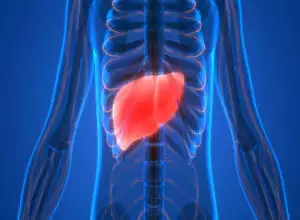A New Study Finds The Close Association Between Japanese Diet And Advanced Liver Fibrosis
Recently, a new study published in the MDPI journal found a remedy to lower the risk of advanced liver fibrosis in non-alcoholic fatty liver diseases. Sources claimed this is the first report that reveals the close association between the severity of liver fibrosis in patients with non-alcoholic fatty liver disease and the Japanese diet patterns.
The scientists examined a total of 136 patients with non-alcoholic fatty liver disease. The Japanese diet used for the research comprised 12 components; fruits, rice, seafood, miso, pickles, soup, soy products, green tea, green and yellow vegetables, mushrooms, coffee, beef, and pork. The study also says that Japanese foods with high fiber content may influence the intestinal microbiota which further helps in lowering the risk of liver fibrosis.
The study found that among the above-mentioned components, a higher intake of soybeans and soybean foods, seaweeds, fish, and shellfish was associated with a lower risk of the disease. The study found that intervention with Japanese diet patterns improves lipid metabolism in young adults. The researchers found that the Japanese diet pattern score is closely associated with lower obesity.
Scientists said that they found the significance of mJDI12 (12-component diet used for the study) in association with nutrient intake (nutrients with antioxidant properties). The research paper added; oxidative stress is associated with the pathogenesis of NASH and intervention with antioxidant nutrients. For example, vitamin E may have a hepatoprotective effect. One of the important factors in management of the fatty liver disease is dietary fiber which lowers cholesterol.

Liver fibrosis in non-alcoholic fatty liver diseases (NAFLD)
On a clinical level, NAFLD develops from simple steatosis (liver fat). The abnormal amount of fat causes inflammation and secretion of cytokines (by infiltrating immune cells). This condition further transforms into liver fibrosis. On a histological level, this condition follows a series of patterns. For example, fat accumulation in the liver leads to infiltration of immune cells which further causes ballooning and eventually liver fibrosis.
However, according to the scientist, it is very difficult to identify which NASH patient will progress to cirrhosis (end-stage liver disease) due to the complex etiology of NASH. However, the stage of liver fibrosis is the strongest predictor of liver-related complexities and mortality.
Doctors around the world diagnose fibrosis or estimate its severity based on the results of blood and imaging tests. But in some cases, patients do require a biopsy. For NAFLD, doctors often recommend weight loss to those who are overweight or have obesity. This helps in reducing inflammation and fibrosis. Here one thing to keep in mind is, rapid weight loss and malnutrition can make the condition worse.
If NASH (non-alcoholic steatohepatitis: a severe form of NAFLD) leads to cirrhosis, doctors treat this with minor medical procedures, medicine, and surgery, if the situation demands. A liver transplant is also an option in many cases to restore health. Thorough research is continuing to reduce the risks involved with this disease.


